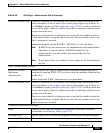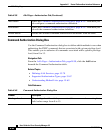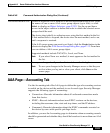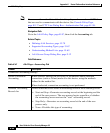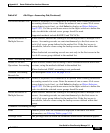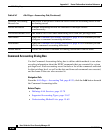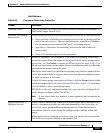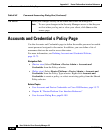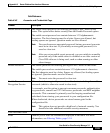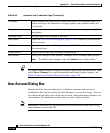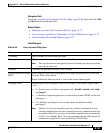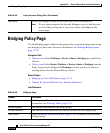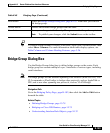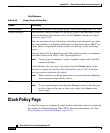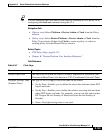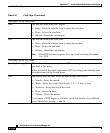
K-99
User Guide for Cisco Security Manager 3.2
OL-16066-01
Appendix K Router Platform User Interface Reference
Accounts and Credential s Policy Page
Field Reference
Table K-43 Accounts and Credentials Page
Element Description
Enable Secret Password The enable secret password for entering privileged EXEC mode on the
router. This option offers better security than the Enable Password option.
The enable secret password can contain between 1-25 alphanumeric
characters. The first character must be a letter. Spaces are allowed, but
leading spaces are ignored. Question marks are also allowed.
Note You can discover an encrypted password, but any password you enter
must be in clear text. If you modify an encrypted password, it is
saved as clear text.
Note After you set an enable secret password, you can switch to an enable
password only if the enable secret is disabled or an older version of
Cisco IOS software is being used, such as when running an older
rxboot image.
Enable Password The enable password for entering privileged EXEC mode on the router.
The enable password can contain between 1-25 alphanumeric characters.
The first character must be a letter. Spaces are allowed, but leading spaces
are ignored. Question marks are also allowed.
Note You must enter the password in clear text.
Enable Password
Encryption Service
When selected, encrypts all passwords on the device, including the enable
password (which is otherwise saved in clear text).
For example, use this option to encrypt username passwords, authentication
key passwords, console and VTY line access passwords, and BGP neighbor
passwords. This command is primarily used for keeping unauthorized
individuals from viewing your passwords in your configuration file.
When deselected, device passwords are stored unencrypted in the
configuration file.
Note This option does not provide a high level of network security. You
should also take additional network security measures.
User Accounts Table
Filter Enables you to filter the information displayed in the table. For more
information, see Filtering Tables, page 3-24.



